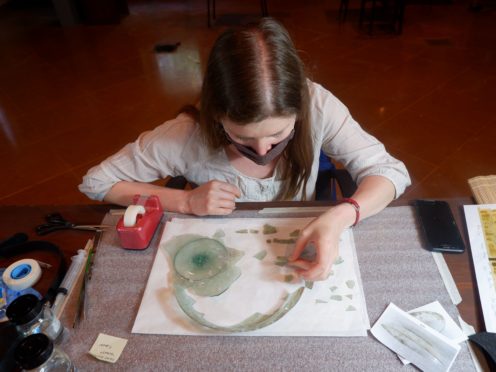The British Museum is to restore eight ancient glass vessels that were severely damaged in the Beirut port explosion.
The vessels were salvaged from a destroyed case which displayed classical and Islamic pieces in the Archaeological Museum at the American University of Beirut (AUB).
Experts at the British Museum in London will piece together the objects after they were shattered into hundreds of pieces and mixed with broken glass from smashed cabinets and windows.

The project, supported by the European Fine Art Foundation (TEFAF), comes ahead of the first anniversary of the explosion next week.
Hundreds of tons of ammonium nitrate, a highly explosive material used in fertilisers that had been improperly stored in the port for years, exploded on August 4 2020, killing more than 200 people and injuring over 6,000.
The AUB’s Archaeological Museum was 3.2km from the explosion and sustained heavy damage to its windows and doors.
The case the vessels were displayed in contained 74 Roman, Byzantine and Islamic period glass vessels, the British Museum said.

Most were shattered beyond repair with only 15 identified as salvageable, and only eight were deemed safe to travel to the British Museum.
Hartwig Fischer, director of the British Museum, said: “Like the rest of the world, we looked on in horror at the devastating scenes in Beirut in August last year.
“We immediately offered the assistance of the British Museum to colleagues in the city. As we mark one year since the tragedy, we’re pleased to be able to provide the expertise and resources of the British Museum to restore these important ancient objects so they can be enjoyed in Lebanon for many more years to come.”

Professor Nadine Panayot, curator of the AUB Archaeological Museum, said: “The loss of many glass tableware vessels dating back to the Roman period, some as early as the 1st century BC, represents a priceless cultural loss for Lebanon and the Near East.
“We are extremely grateful for the British Museum’s contribution to the restoration of eight of the glass vessels of the AUB Archaeological Museum that were shattered by the Beirut port explosion.
“My thanks go to TEFAF as well for their generosity and their support of the project.”
